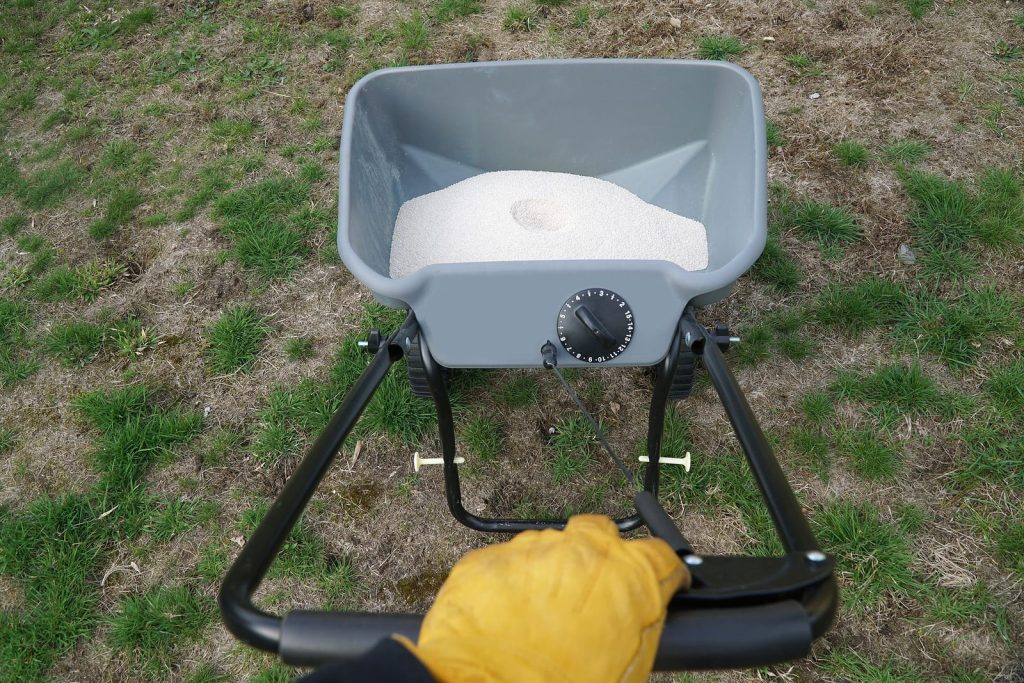Smart Fall Fertilizing Strategies to Follow to Grow a Stunning Yard

Now that autumn has arrived, it is time to fertilise. What is the purpose of autumn lawn fertilizer? By strengthening the roots of your plants and grass in the autumn, you may provide them with a solid foundation for success the following spring.
The formula for fertilizer, which is often expressed by three digits like 5-10-5, is the first item to comprehend. The first number is nitrogen, which encourages the development of grass blades and foliage; the second is phosphorus, which aids in the formation of roots; and the third is potassium, which encourages the function of cells and the absorption of trace elements. What do you fertilise, though? By when? With what, too? Starting with your yard, let’s.
When Is It Time to Apply Fall Fertilizer?
September is the ideal month to fertilise your lawn in the autumn. Grass is emerging from a possible drought-induced slumber and is recuperating after a long, hot summer. Therefore, you should fertilise your lawn to encourage blade development.
Top Fall Fertilizer for Lawns
It may be made to grow again using a 20-8-8 fertilizer. Always apply at the prescribed rate as directed by the manufacturer. This is the time of year when some people treat weeds and insects, but in my opinion, you should just apply fertilizer unless there are warning indications or a history of issues.
Although applying lawn fertilizer in the autumn is necessary, it is much more crucial to do so by the end of October or the beginning of November. Use a 13-25-12 fertilizer mixture at that point. Phosphorus pushes will encourage root development through early December and even into November. In addition to making the grass more drought and disease resistant, promoting root growth before winter arrives will guarantee that the lawn greens up earlier in the spring.
Fertilizer for plants
Now that the grass has been mowed, it is time to think about plants. Perennials are beginning to fade by now, but they will benefit from a 0-20-0 super phosphate fertilizer that is softly tilled into the soil and distributed at prescribed quantities around the plants. You’ll have more blossoms and healthier plants the following spring.
Fertilizer for Shrubs and Trees
Fertilise plants and shrubs in the autumn as well. Since most trees and shrubs are found in mulch beds where their decomposition releases nitrogen, I believe that all trees and shrubs need fertilizer. We also scrape leaves off these beds every autumn, depriving the plants of the nutrients that the decaying leaves would normally provide.
To make up for this, I suggest gently cultivating the bed every 1,000 square feet and adding one to three pounds of slow-release nitrogen. (To determine the precise quantity of fertilizer required, compute the area of your beds, and get advice from your nearby garden centre.) To encourage root development, I like to fertilise trees in late September or early October.
When plants begin to develop in the spring, these nutrients will still be present in the soil. A dosage of super phosphate may assist stimulate flower development on trees and shrubs that do not blossom well. Even with all the superphosphate in the world, a plant won’t blossom if it is not in the proper location.
Fertilizer for bulbs
Bulb planting should also be done in the autumn. In order to ensure robust spring blooming, I like to add superphosphate to encourage root development. While some advice using bone meal when planting bulbs, I find that it attracts rats that consume the bulbs as well as the bone meal.
As you can see, encouraging root development is the main objective of autumn fertilisation. Plants with plenty of blossoms are healthy when their roots are robust. Thus, force those roots!
